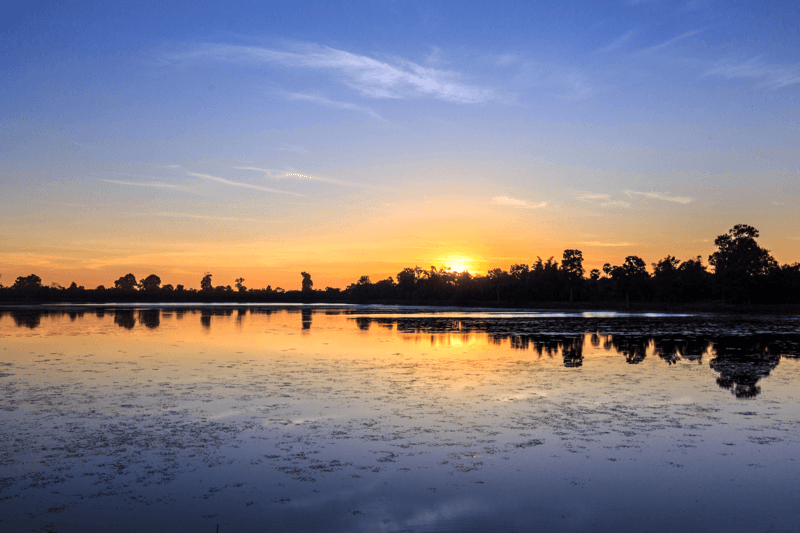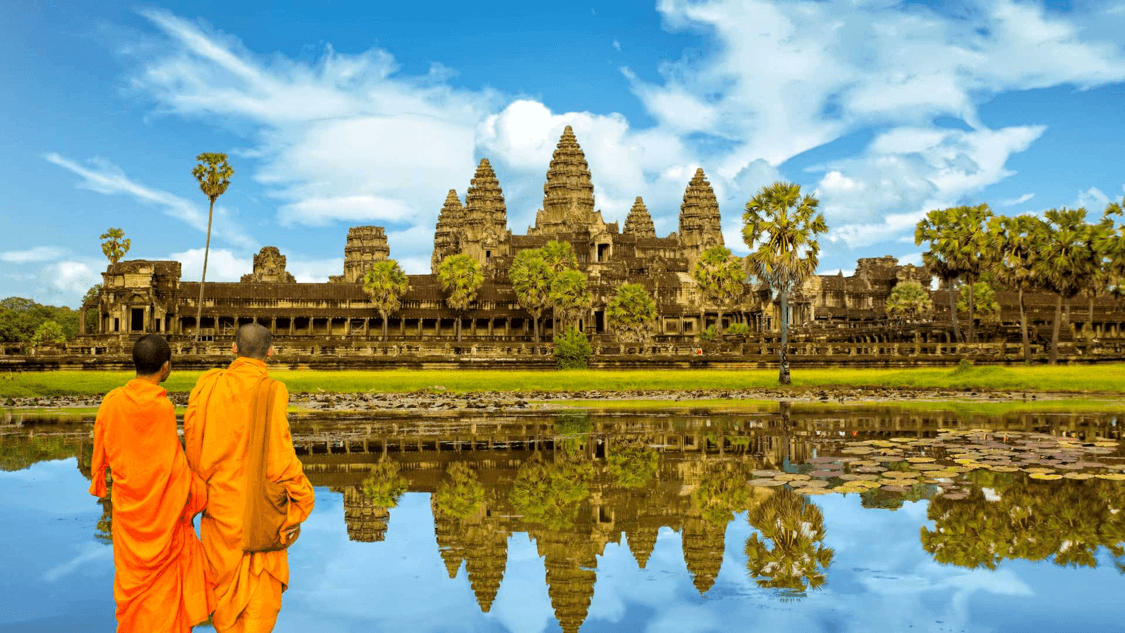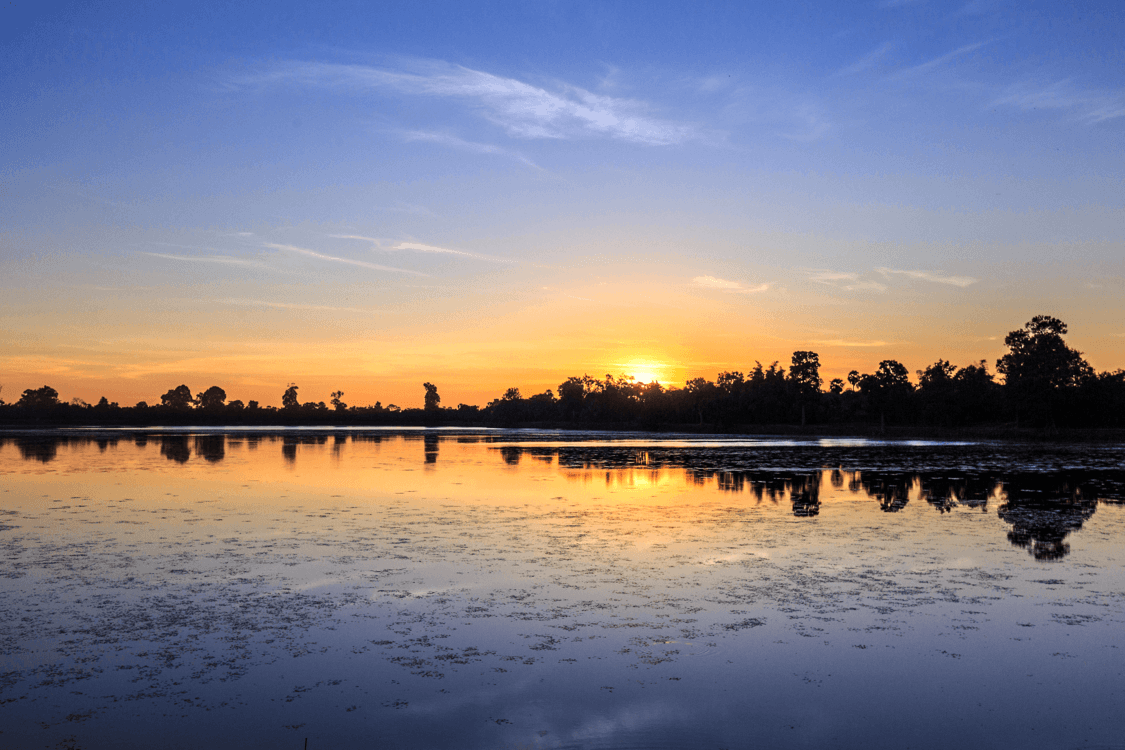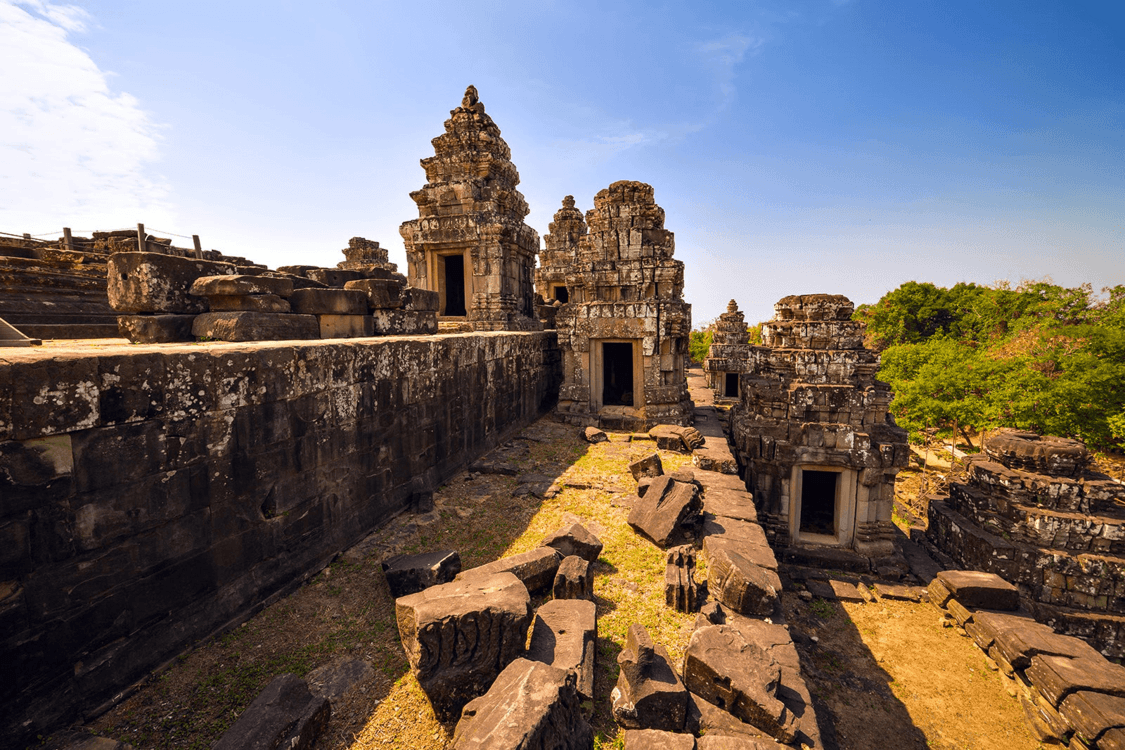Angkor Wat
Angkor Wat, hailed as the largest religious monument in the world, is a great ancient wonder of the East. It refers to the Angkor ruins located 6 kilometers north of Siem Reap, Cambodia, and is listed as one of the four great ancient wonders of the East. The unique design of Angkor Wat has even become a symbol of Cambodia, appearing on the national flag.
Bayon Temple
Visit the most essential temple in the Angkor Thom ruins. Bayon Temple is located at the center of Angkor Thom and is one of the most important parts of this site. It was built in the late 12th century by King Jayavarman VII as a temple for himself. Here, visitors can not only admire the famous 'Smile of Angkor' but also witness the rich and vivid bas-reliefs on the corridors.
Prasat Beng Mealea
Explore one of the most mysterious temples in the Angkor ruins. Prasat Beng Mealea is located about 40 kilometers east of Angkor Wat and about 10 kilometers northeast of Banteay Srei. It is completely immersed in dense jungle, showcasing the scene of Angkor Wat sleeping in the jungle before it was discovered. Although Prasat Beng Mealea is now almost in ruins and covered by dense jungle, making it impossible to present in its entirety, its uniqueness is still worth your time to visit and explore.
Preah Khan Temple
The extensive stone arch corridors resemble countless stone gates welcoming people. Preah Khan Temple is located near the northeast of Angkor Thom and was built in the 12th century. It is said to have been constructed in memory of King Jayavarman VII's father and is one of the largest temples in the Angkor area, showcasing a grand and majestic atmosphere. It is also said that during the construction of Angkor Thom, this place served as the temporary residence of the king. The interior of Preah Khan Temple is cross-shaped, with the central sanctuary at the center, connected to the east, south, west, and north gates through vaulted corridors, and outside the gates are passageways.
Neak Poan
Neak Poan, also known as the Dragon Coiled Pool, was once a bathing place for treating diseases. It consists of a central large pool and four surrounding smaller pools, symbolizing the coiled giant serpent. In the center of the large pool, there is a small island with a stone tower temple built in the style of Mount Meru, with two intertwined serpent gods carved on the tower.
Neak Poan was once a place where people bathed. Each of the four directions of the large pool has a sculpted spout: a human figure in the east, a lion figure in the south, a horse figure in the west, and an elephant figure in the north. It is said that at that time, the bottom of the large pool was filled with various herbs. During the rainy season, the pool would be filled with water, soaking the herbs, and the medicinal water would flow into the connected smaller pools.
Royal Bath Srah Srang
Angkor Wat is one of the best places to watch the sunrise. This place was once used for bathing ceremonies, and like other large pools, there was originally a temple in the middle, but now only the stone foundation remains. Angkor Wat is also a great place to watch the sunrise. Although not many tourists come here to watch the sunrise, the sight of the sunlight reflecting on the water surface of the bath is very beautiful.
Pre Rup
This magnificent structure is known as the 'Royal Crematorium.' Pre Rup is located south of East Mebon, about 1.5 kilometers away, and was built during the same period as Angkor Wat. It is a larger pyramid-like structure. It was the site where ancient royalty conducted cremation ceremonies to achieve their 'transformation into gods,' hence it is also known as the Transformation Tower. The height of Pre Rup's architecture is breathtaking, and when you climb up, you can overlook the distant forest with a wide view. It is also one of the best places to watch the sunset over Angkor Wat. Although Pre Rup is slightly off the beaten path and fewer tourists come to watch the sunset, if you are coming for the sunset, it is recommended to arrive before 4:30 PM so you can find a good spot.
Phnom Bakheng
This is the prime spot to enjoy the sunset over Angkor Wat. Phnom Bakheng is located to the northwest of Angkor Wat, about 1.5 kilometers away, near the south gate of Angkor Thom. This small hill is about 65 meters high and is the highest point in the surrounding area, offering a panoramic view of Angkor Wat. On the hill, there is a Hindu temple named Phnom Bakheng, dedicated to the god Shiva. The most attractive feature of Phnom Bakheng is undoubtedly its magnificent sunset view. There are two ways to reach the top of Phnom Bakheng: by walking or by riding an elephant.



















